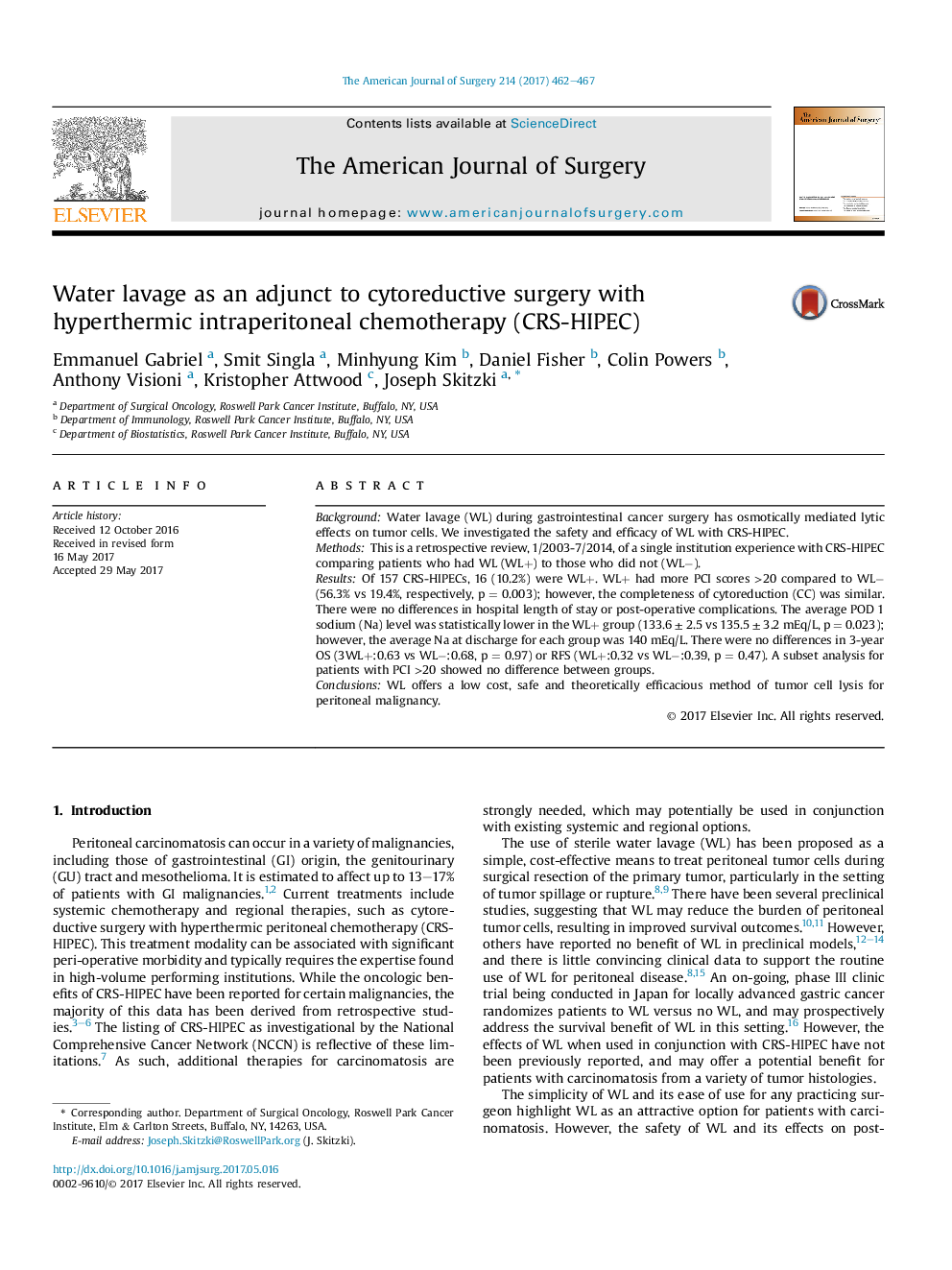| کد مقاله | کد نشریه | سال انتشار | مقاله انگلیسی | نسخه تمام متن |
|---|---|---|---|---|
| 5730978 | 1611467 | 2017 | 6 صفحه PDF | دانلود رایگان |

BackgroundWater lavage (WL) during gastrointestinal cancer surgery has osmotically mediated lytic effects on tumor cells. We investigated the safety and efficacy of WL with CRS-HIPEC.MethodsThis is a retrospective review, 1/2003-7/2014, of a single institution experience with CRS-HIPEC comparing patients who had WL (WL+) to those who did not (WLâ).ResultsOf 157 CRS-HIPECs, 16 (10.2%) were WL+. WL+ had more PCI scores >20 compared to WLâ (56.3% vs 19.4%, respectively, p = 0.003); however, the completeness of cytoreduction (CC) was similar. There were no differences in hospital length of stay or post-operative complications. The average POD 1 sodium (Na) level was statistically lower in the WL+ group (133.6 ± 2.5 vs 135.5 ± 3.2 mEq/L, p = 0.023); however, the average Na at discharge for each group was 140 mEq/L. There were no differences in 3-year OS (3WL+:0.63 vs WLâ:0.68, p = 0.97) or RFS (WL+:0.32 vs WLâ:0.39, p = 0.47). A subset analysis for patients with PCI >20 showed no difference between groups.ConclusionsWL offers a low cost, safe and theoretically efficacious method of tumor cell lysis for peritoneal malignancy.
Journal: The American Journal of Surgery - Volume 214, Issue 3, September 2017, Pages 462-467